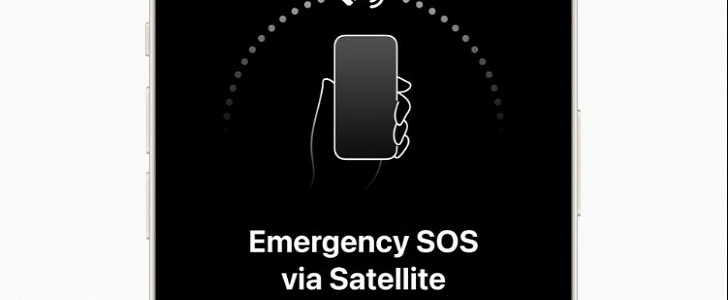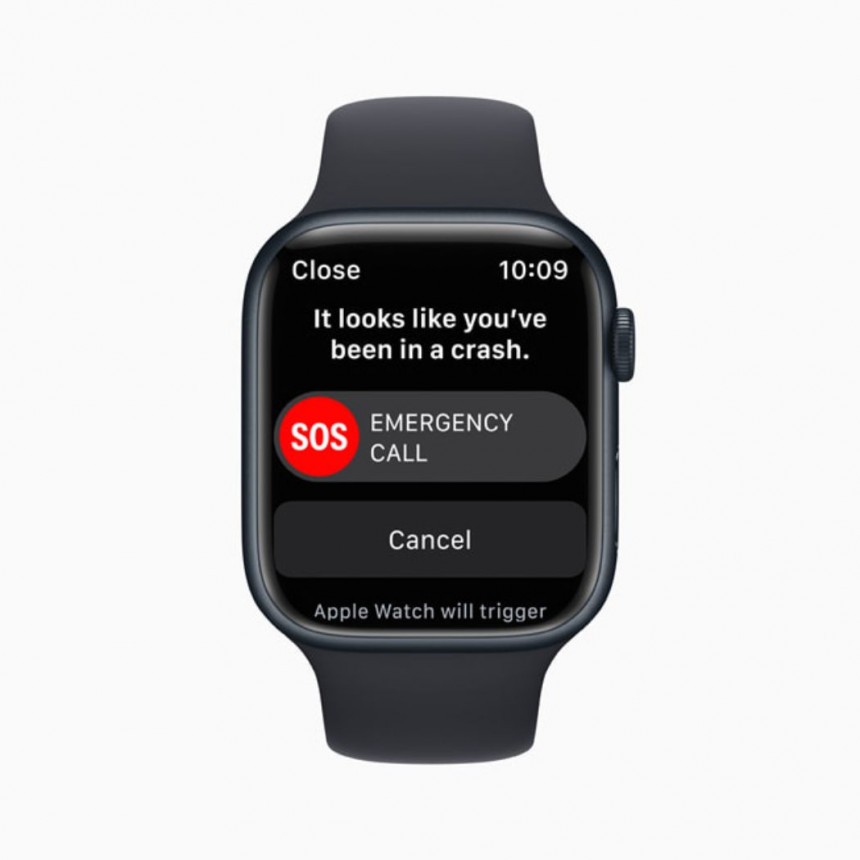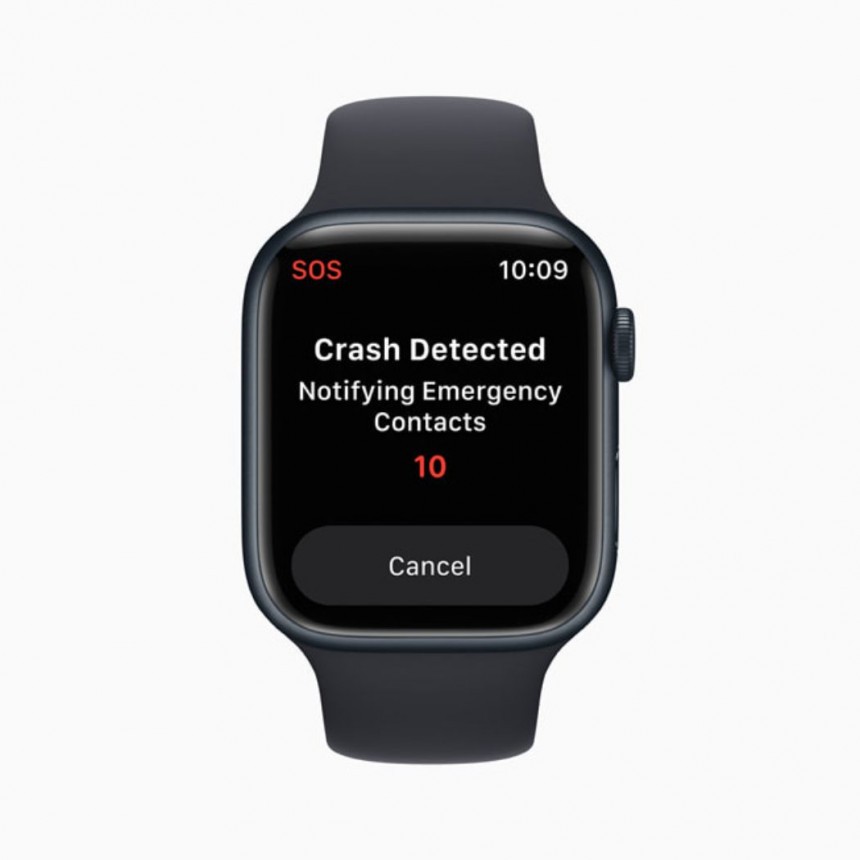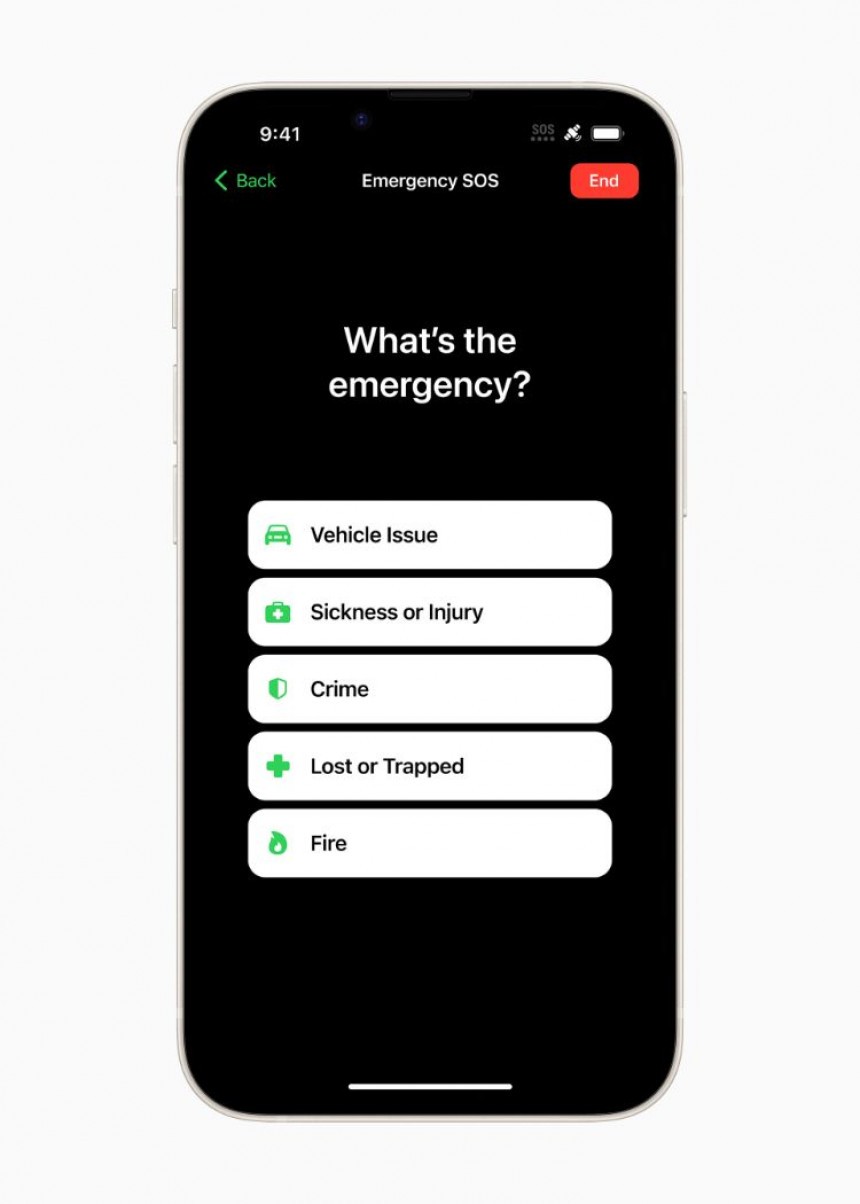Earlier this week, Apple announced the key features of the iPhone 14, along with the new Apple Watches. Everyone got to enjoy the usual presentation, where everything is better than before, while the internet had the regular banter with memes about making the same phone with a different name at a higher price. But let us get serious for a moment and consider a different look at several of those features regarding motorists.
First, the new iPhone 14's crash detection system means that your phone will be able to figure out that you have been in a car accident, and it can call emergency services automatically if you do not press a button on the screen within ten seconds of the impact. There are numerous aspects to this, some of which are privacy related.
I am going to put my aluminum foil hat on for a second and let you all know that your smartphone can probably listen to whatever you are saying and that its GPS, along with its built-in gyroscope, can figure out if you are doing rapid acceleration and deceleration sessions in your car, as well as where you are when doing it.
In other words, your current smartphone plausibly has what it takes to “snitch” on you when you are speeding, and the new iPhone 14 will call the cops automatically if you crash. The good part is that the phone will not mention that speeding was involved (or how fast you were going), but that will be evident after analyzing the crash.
With the tin-foil hat removed, it is fair to say that the feature is meant to save lives, and it will probably do that in a few cases. It might also lead to several unwanted calls to emergency services, so be sure to keep your phone close to you when going to a track day or a drag strip, where you might experience the most G-s your vehicle can generate, along with triggering an emergency services call.
Mind you, GM's OnStar did that on some early Corvettes C7s and Camaros on track days if they were driven hard enough.
Second, the other part about this function is that my suggestion is to never rely on it to work flawlessly. Or, in other words, do not bet your life on it. We are all human, and our devices are designed by humans.
Those devices work with various systems, sensors, cell towers, and so on, and the connection might not operate as expected exactly when you have an emergency. So be sure to call emergency services yourself to ensure that help really is on the way if you have had an accident or if you see someone else requiring these authorities.
The new iPhone 14 can also pride itself on the ability to make Emergency SOS calls over satellite connections, but only for North American customers – in the early stages. The service is free for the first two years of iPhone 14 ownership and will involve a monthly fee after that point.
My suggestion here is to avoid treating the iPhone 14 as an emergency beacon with smartphone functions as a bonus. It is not such a device, but vice-versa, a smartphone with the potential to work as an emergency beacon. The difference comes in the form of battery life, as well as in the risk of cracking your screen while crashing your motorcycle, or anything that might involve destroying your phone while losing your ability to get help.
The functions that Apple presented have not been tested by consumers in real life situations, and we have no clue how effective they may be. As a kind reminder, the first generation of any new technology will be promising, but will have a few hiccups along the way.
A professional emergency beacon, which is something that those who like to hike or go off-roading should already have, is superior in its ability to call for help than an iPhone 14 is, and that is because you cannot drain its battery by using it to take pictures.
Do you see where this is going? It is a nice-to-have feature if you get lost in the woods during your picnic. If you use your phone normally during the day - and drain its battery, or if it gets too cold or too hot, the phone will shut off, and then you have no emergency function available. Be careful what you choose as a safety net.
Remember, now, nobody knows ahead of time when they are going to be in an emergency, and nobody saves battery life as if they know that they will get stuck in mud on a mountain or crash their bike in a ditch or anything like that. Having an emergency beacon in your jacket or tied to your belt might ensure a faster response from emergency personnel than a phone with a dead battery will.
Users will also be able to send their location to a friend or contact through the Find My app, even if they do not have any cellular or Wi-Fi internet connection available. The latter part is genius because it can work without a signal, so a friend might help you in need, but it also means that you can be tracked by authorities just because it is possible.
On the other hand, I hope that this feature gets developed to the point where Apple will be able to find your phone if it gets stolen and the thief shuts it off. Or if it gets lost and it did not have roaming activated. Maybe it will be something to look forward to for the iPhone 16 or something.
I am going to put my aluminum foil hat on for a second and let you all know that your smartphone can probably listen to whatever you are saying and that its GPS, along with its built-in gyroscope, can figure out if you are doing rapid acceleration and deceleration sessions in your car, as well as where you are when doing it.
In other words, your current smartphone plausibly has what it takes to “snitch” on you when you are speeding, and the new iPhone 14 will call the cops automatically if you crash. The good part is that the phone will not mention that speeding was involved (or how fast you were going), but that will be evident after analyzing the crash.
With the tin-foil hat removed, it is fair to say that the feature is meant to save lives, and it will probably do that in a few cases. It might also lead to several unwanted calls to emergency services, so be sure to keep your phone close to you when going to a track day or a drag strip, where you might experience the most G-s your vehicle can generate, along with triggering an emergency services call.
Second, the other part about this function is that my suggestion is to never rely on it to work flawlessly. Or, in other words, do not bet your life on it. We are all human, and our devices are designed by humans.
Those devices work with various systems, sensors, cell towers, and so on, and the connection might not operate as expected exactly when you have an emergency. So be sure to call emergency services yourself to ensure that help really is on the way if you have had an accident or if you see someone else requiring these authorities.
The new iPhone 14 can also pride itself on the ability to make Emergency SOS calls over satellite connections, but only for North American customers – in the early stages. The service is free for the first two years of iPhone 14 ownership and will involve a monthly fee after that point.
The functions that Apple presented have not been tested by consumers in real life situations, and we have no clue how effective they may be. As a kind reminder, the first generation of any new technology will be promising, but will have a few hiccups along the way.
A professional emergency beacon, which is something that those who like to hike or go off-roading should already have, is superior in its ability to call for help than an iPhone 14 is, and that is because you cannot drain its battery by using it to take pictures.
Do you see where this is going? It is a nice-to-have feature if you get lost in the woods during your picnic. If you use your phone normally during the day - and drain its battery, or if it gets too cold or too hot, the phone will shut off, and then you have no emergency function available. Be careful what you choose as a safety net.
Remember, now, nobody knows ahead of time when they are going to be in an emergency, and nobody saves battery life as if they know that they will get stuck in mud on a mountain or crash their bike in a ditch or anything like that. Having an emergency beacon in your jacket or tied to your belt might ensure a faster response from emergency personnel than a phone with a dead battery will.
On the other hand, I hope that this feature gets developed to the point where Apple will be able to find your phone if it gets stolen and the thief shuts it off. Or if it gets lost and it did not have roaming activated. Maybe it will be something to look forward to for the iPhone 16 or something.




